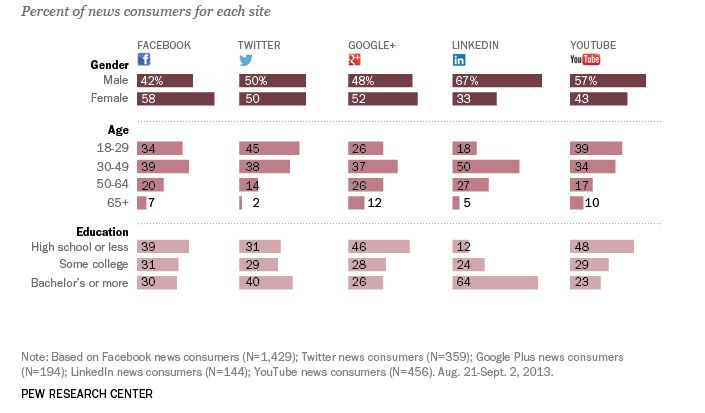Read All About It - On Social Media?

At HIV.gov, we utilize our accounts on FacebookExit Disclaimer, TwitterExit Disclaimer, and InstagramExit Disclaimer to share important HIV/AIDS updates. In addition to our blog, social media is where we engage our readers and provide the latest news from federal agencies on HIV and viral hepatitis. Social media is becoming a place where internet users not only connect with friends and loved ones, but also find news on topics relevant to their interests.
On March 13, 2014, the Pew Research Center’s Journalism ProjectExit Disclaimer published a new reportExit Disclaimeron the pathways digital news. Here are a few highlights from the report on social media and news and how they can be useful for the HIV community:
- News has a place on some sites more than others: 50% of Facebook and Twitter users get their news on those sites, and 62% of reddit users get their news from Reddit. Overall Facebook is in the lead, with 3 in 10 adults getting some news while on the site. On the other hand, the percent of adults who get news on Pinterest and Vine is minimal.
- By chance? 78% of Facebook news users say that they do not go looking for the news. Only 34% of news consumers on Facebook “like” a news organization, which suggests that the news people see is coming from friends who send them articles or share posts.
- News topics across the spectrum: 73% say they view entertainment news, 65% community news, 55% national government and politics, and 46% say they see news on health and medicine.
- Social networks & engagement: Internet users who share news also contribute content through updates and photos/videos related to news events on their social media channels. Interestingly, visitors who come to a news site through Facebook or a search have lower engagement with that outlet than those who come to that news website directly. Those who arrive directly to a site stay for about 4 minutes per visit, while those who arrive from Facebook/search stay for less than 2 minutes on average.
- Know your audience: About 45% of Twitter news consumers are between the ages of 18-29, making them them the youngest consumers among other social media sites such as Facebook, Google+, and LinkedIn. 58% of Facebook news consumers are female, as compared to 50% of those on Twitter, 52% on Google+, and 33% on LinkedIn.

As we have discussed in our previous new media posts, understanding your audience is essential in developing your communications strategy. With 46% of Facebook news consumers receiving health news on Facebook, this information means that social media can be an important place to share HIV/AIDS-related news.
We talked to David Stupplebeen, Media and Communications Coordinator at the Asian & Pacific Islander Wellness CenterExit Disclaimer, who told us: “For the Banyan Tree ProjectExit Disclaimer, our audience is primarily HIV providers. We make sure to curate news stories from trusted outlets that can help providers better serve their clients. Knowing your audience is key to providing them with relevant news stories and help them sift through the amount of information coming through their news feeds.”
Do you share news through your social media profiles? What have been your experiences? We would love to hear from you!
If aren’t already, be sure to follow our FacebookExit Disclaimer, TwitterExit Disclaimer, and InstagramExit Disclaimer accounts for the latest updates and news in HIV.